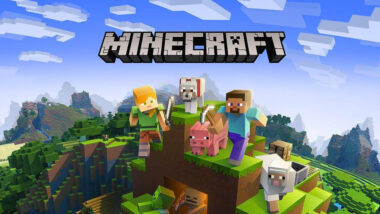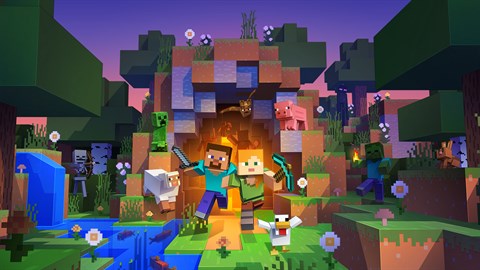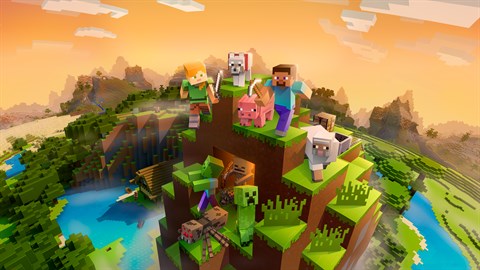Minecraft: A Complete Review
Minecraft, developed by Mojang Studios, has revolutionized the gaming industry since its release in 2009. Known for its sandbox gameplay and limitless creativity, Minecraft has captivated millions of players worldwide. This review explores the various facets of Minecraft, from its humble beginnings to its current status as a cultural phenomenon. Whether you’re a veteran player or new to the game, this article will provide an in-depth look at what makes Minecraft a timeless classic.
Introduction to Minecraft
Minecraft is more than just a game; it’s a universe of endless possibilities. Players explore a blocky, procedurally-generated world, gathering resources, crafting tools, and building structures. Its open-ended gameplay encourages creativity, collaboration, and exploration, making each playthrough unique.
Origins and Early Development
Understanding Minecraft’s origins sheds light on its evolution and impact on the gaming landscape.
Development by Mojang Studios
Minecraft was created by Markus Persson, also known as “Notch,” and later developed by Mojang Studios. Initially released as a public alpha in 2009, the game gained popularity through word of mouth and online forums.
Evolution through Updates
Minecraft has evolved significantly with regular updates introducing new features, biomes, mobs, and gameplay mechanics. These updates have kept the game fresh and expanded its possibilities, appealing to a diverse audience.
Gameplay Mechanics
The core gameplay mechanics of Minecraft emphasize exploration, crafting, and survival.
Basic Controls and Interface
Players navigate the world using simple controls to move, mine blocks, and interact with items. The intuitive interface allows for seamless gameplay across various platforms, from PC to consoles and mobile devices.
Survival and Creative Modes
Minecraft offers two main modes: Survival, where players must gather resources and survive hostile mobs, and Creative, which provides unlimited resources for building and experimenting. These modes cater to different playstyles and preferences.
Graphics and Art Style
Minecraft’s distinctive art style has become iconic in the gaming world.
Pixelated Aesthetic
The game features blocky, pixelated graphics that evoke a retro charm while maintaining a distinct visual identity. This simple yet effective art style contributes to the game’s accessibility and allows for extensive customization through texture packs and mods.
Dynamic Environments
Minecraft’s procedurally-generated worlds include diverse biomes, ranging from lush forests and snowy mountains to expansive oceans and desert plains. The dynamic environments provide opportunities for exploration and discovery.
Multiplayer and Community
The Minecraft community plays a vital role in the game’s longevity and innovation.
Multiplayer Experience
Players can join multiplayer servers to collaborate on building projects, engage in minigames, or participate in community events. Multiplayer enhances social interaction and fosters a sense of community among players.
Modding and Customization
One of Minecraft’s strengths is its robust modding community, which creates custom content, tweaks gameplay mechanics, and introduces new features. Modding expands the game’s possibilities and allows players to tailor their experience.
Cultural Impact and Legacy
Minecraft has left a profound impact on gaming culture and beyond.
Educational Uses
Minecraft has been embraced by educators as a tool for teaching subjects like mathematics, history, and architecture. Its immersive world and creative tools encourage learning through exploration and experimentation.
Influence on Game Design
The success of Minecraft has influenced game developers to explore sandbox, procedural generation, and player-driven narratives. Its impact on game design continues to inspire innovative gameplay mechanics and storytelling techniques.
Updates and Future Developments
Minecraft’s ongoing updates and expansions ensure its relevance and longevity in the gaming industry.
Major Updates and Expansions
From the introduction of new biomes and mobs to the addition of gameplay features like the Nether and End dimensions, Minecraft’s updates continually expand the game’s universe. These updates are eagerly anticipated by the community and contribute to its ever-evolving nature.
Community Feedback and Engagement
Mojang Studios actively engages with the Minecraft community through forums, social media, and community events. Player feedback plays a crucial role in shaping future updates and ensuring that new content aligns with player expectations.
Pros and Cons of Minecraft
Minecraft, like any game, has its strengths and weaknesses.
Pros
- Creativity and Freedom: The game’s sandbox nature allows for limitless creativity and exploration.
- Community and Multiplayer: Engaging with a vibrant community and multiplayer experiences enhances gameplay.
- Educational Value: Minecraft promotes learning and problem-solving skills through interactive gameplay.
Cons
- Learning Curve: New players may find the initial learning curve steep, especially with crafting and survival mechanics.
- Graphics Style: While iconic, the pixelated graphics may not appeal to all players seeking realism in visuals.
- Time Sink: The immersive nature of Minecraft can lead to extended play sessions, requiring time management.
Conclusion
Minecraft remains a groundbreaking achievement in gaming, combining exploration, creativity, and community engagement into a cohesive experience. Its enduring popularity, supported by regular updates and a passionate player base, underscores its status as a cultural phenomenon. Whether you’re crafting elaborate structures, embarking on adventures with friends, or exploring new worlds, Minecraft offers something for everyone. As the game continues to evolve and innovate, its legacy as a pioneer in sandbox gaming is assured.











